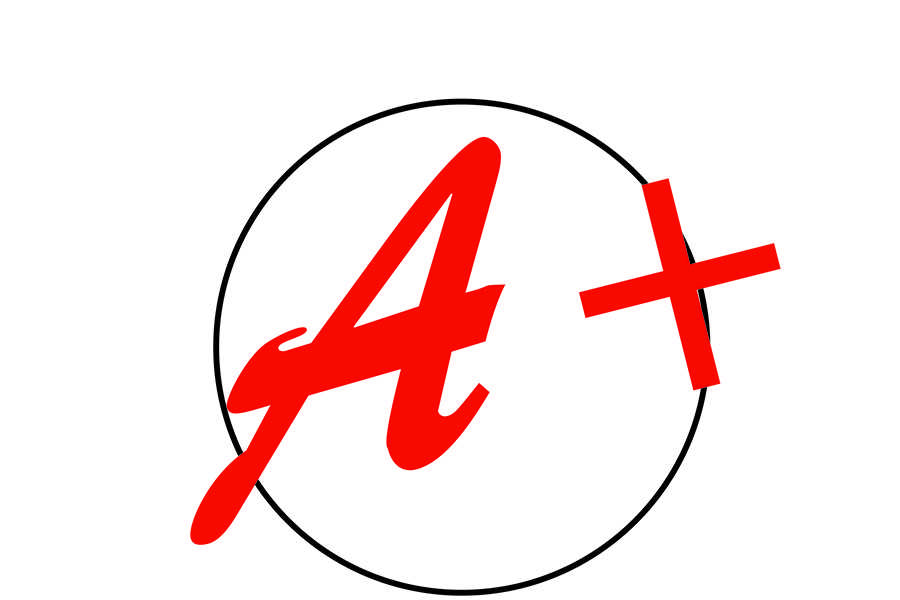“Person A” breezed through high school by taking foods, lifetime sports and geology. They got As in all classes and eventually dropped hours unnecessary come their final semester.
“Person B,” on the other hand, continually pushed themselves by taking all advanced or AP classes, prep courses and electives that matched their major interests, even if they involved more work. They were also able to get all the As they wanted.
While these two people show extremes when it comes to class loads, they share something in common. The similarity between these students doesn’t lie in the quality of their English essays, the difficulty of their math homework, or the amount of reading they’re required to complete. Instead, it lies in their grades.
Come May, both will be leading their senior class as valedictorians, a title traditionally given to dedicated workers who maintain the top GPAs in their classes.
However, not all As are created equal.
In the world beyond high school, people who don’t push themselves hard will not succeed. Just like the idea of natural selection, students who “get by” in high school by obtaining easy As will not be successful in college because their work ethic was not as strong in high school.
It would be unfair to say that students in regular classes are not hard workers. To perform well in any class, a student must study, complete homework assignments and be attentive in the classroom.
That’s why, under the district’s weighted grading system, students who receive straight-As in high-school-level coursework rather than college-level coursework (AP classes) can still earn the 4.0 grade point averages they deserve. Students in Advanced Placement courses, meanwhile, can earn higher GPAs to correspond with the difficulty of their curriculums in applying to colleges.
A GPA is a competition against oneself. Taken alone, the number at the bottom of the transcript reflects how well a student is performing independently of his or her classmates.
However, when GPA is factored into class rank, grades become a contest between students from up and down the spectrum of coursework rigor. Many high schools across the country have eliminated the use of class rank in order to promote a spirit of cooperation rather than competition, but as USD 497’s current system stands, class rank is calculated using unweighted grades.
A high class rank appeals to colleges and scholarship programs, qualifies students as Kansas Honor Scholars (the top 10 percent of the senior class) and puts students in the running for valedictorian standing at graduation, among other honors. Using unweighted rather than weighted grades to determine such distinctions makes it advantageous for students capable of earning average grades in higher-level classes to instead pursue above-average grades in lower-level classes.
This grading system penalizes students for challenging themselves in difficult classes.
The purpose of a weighted grade is to show the distinction between a normal high school curriculum and an advanced curriculum. The added points aren’t there to bring students down, but instead to help them push themselves further and receive the recognition they deserve.
A study at the University of Maine in 1993 showed that weighted grades do not give students an advantage in college applications 74% of the time. However, students who do have weighted grades are chosen 76% more than those who don’t have a weighted grade.
Not only can weighted grades help students when it comes to college acceptance, but they can also encourage more students to challenge themselves in AP or advanced classes. There is less risk involved in enrolling in a higher-level course when a student knows his or her grade will take the difficulty of the class into account.
The people who spend their weekends reading prep books and waking up at 4 a.m. to spend their Saturdays debating are not given enough credit under the current system. The dedication to earning good grades in an AP class shows a strong work ethic that will help later in life, but students are not receiving this positive message from the ranking at the bottom of their transcripts.
In adult society, keynote speakers are drawn from the world’s superstars: former presidents, astronauts, Pulitzer Prize winners, poet laureates, the founders of nonprofit organizations—all of the people who have built their lives upon challenging themselves and achieving excellence.
At graduation, we want to hear from these people in teenager form. We want to hear from the high school students who will go on to cure cancer or write the next Harry Potter. Using weighted grades to choose valedictorians will help to ensure that we do.
Maybe if “Person B” could say they have a 4.2 GPA, that would motivate “Person A” to work harder to be like their classmate. An increase in AP classes throughout the student body would get everyone more prepared for the future.
Therefore, the “A” shouldn’t be the same for the two spectrums of students. The truth behind an “A-worthy paper” in a regular class isn’t the same as an “A-worthy paper” in an advanced class. By telling students in regular classes now that all their work is capable of great grades, the rankings of GPA are setting students up for failure later.















